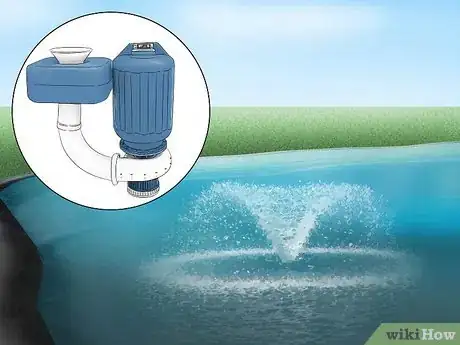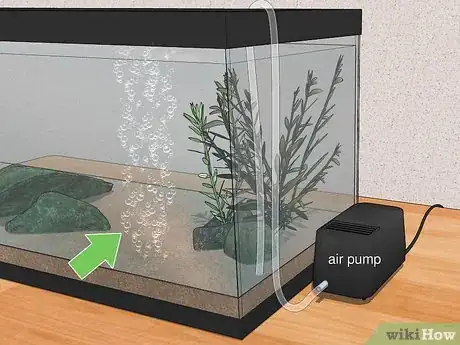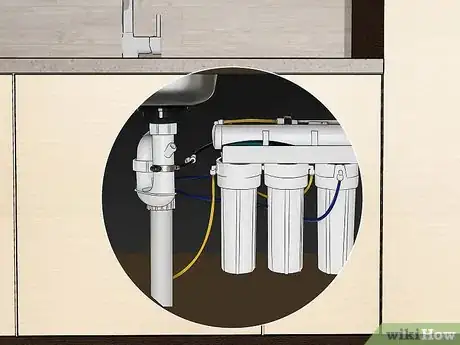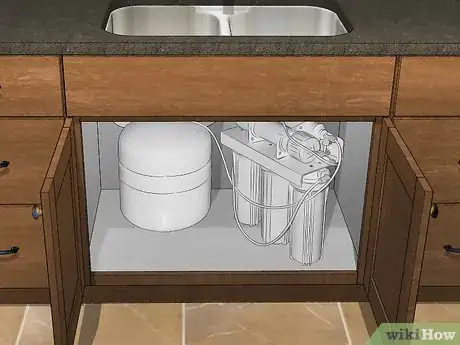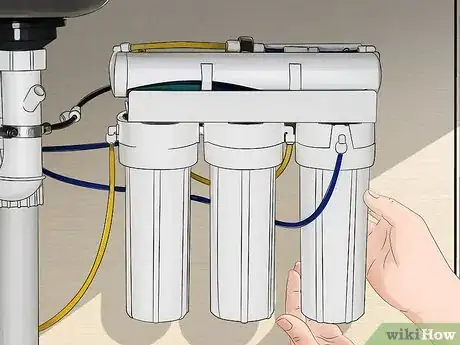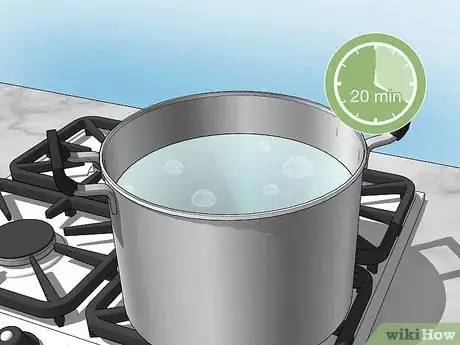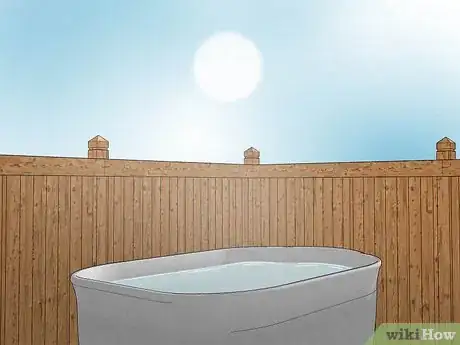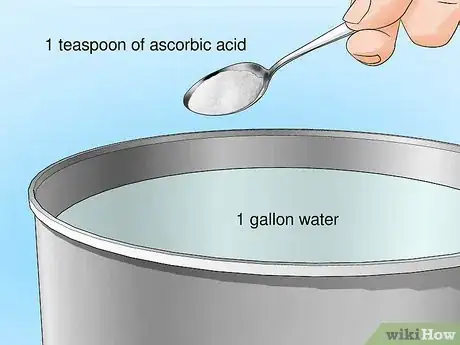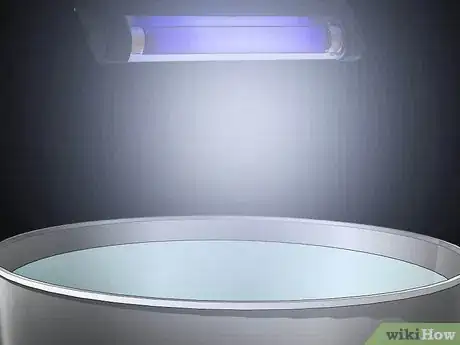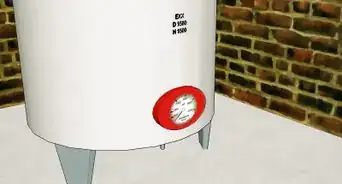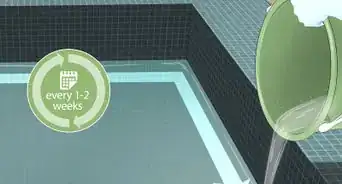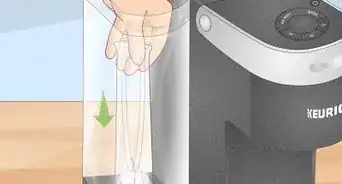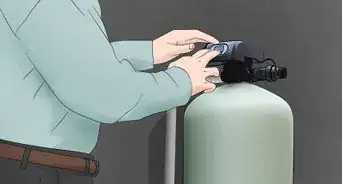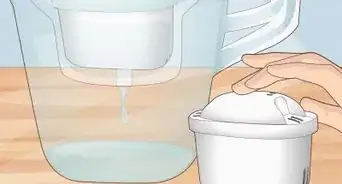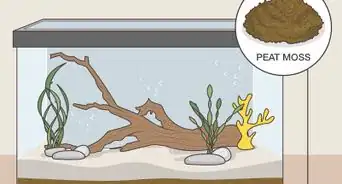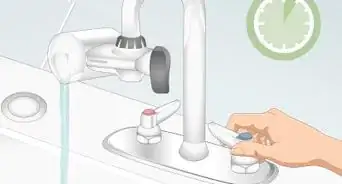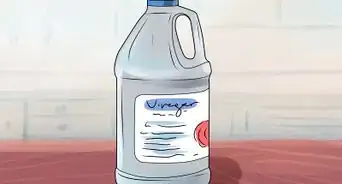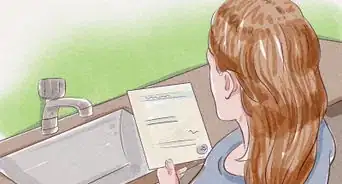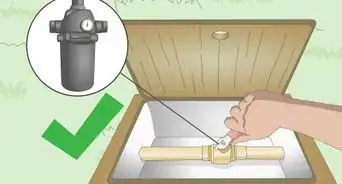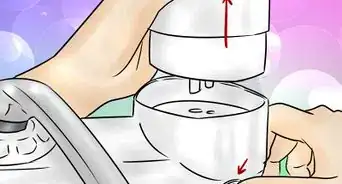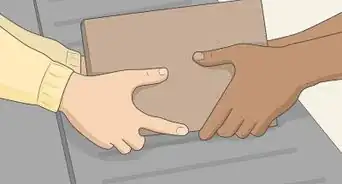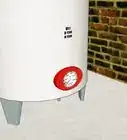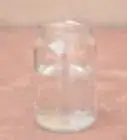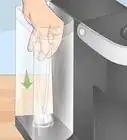This article was co-authored by wikiHow staff writer, Christopher M. Osborne, PhD. Christopher Osborne has been a wikiHow Content Creator since 2015. He is also a historian who holds a PhD from The University of Notre Dame and has taught at universities in and around Pittsburgh, PA. His scholarly publications and presentations focus on his research interests in early American history, but Chris also enjoys the challenges and rewards of writing wikiHow articles on a wide range of subjects.
wikiHow marks an article as reader-approved once it receives enough positive feedback. In this case, 86% of readers who voted found the article helpful, earning it our reader-approved status.
This article has been viewed 764,441 times.
Learn more...
Whether you’re concerned about chlorine in your drinking water, fish tank, or garden, there are several quick and easy ways to remove chlorine from water. Natural methods like boiling or evaporation are useful for small volumes of water. Dechlorinating a large volume, though, will probably require the use of an additive. In any case, you could invest in a filtration system to remove chlorine at the source and save yourself some time.
Steps
Dechlorinating Fish Tank or Pond Water
-
1Install an aerating sprayer for your fish pond. If you’re trying to dechlorinate pond water, use a spraying device (like a spraying nozzle connected to a hose) to add air into the water as it enters the pond. Chlorine is volatile and will naturally dissipate in open ponds, but aeration will speed up the process considerably.
- Aeration does not work for chloramine, however, which is a less volatile additive used by some municipal water authorities. You’ll need to add a dechlorination agent as well.
-
2Add a dechlorination agent to remove chlorine and chloramine. You can buy dechlorination agents at any pet store. Every dechlorination agent specifies the amount of water it’s designed to treat, so read the directions carefully. Adding the dechlorination agent requires unscrewing the bottle's lid, then turning the bottle upside down, allowing the proper amount to drip out.[1]
- The water will be ready for immediate use.
- If you’re using the water in a fish tank with a biological filter, choose a dechlorination agent that doesn’t have an ammonia remover, which could cause problems in your filter.[2]
Advertisement -
3Aerate fish tank water using an air pump. You should always dechlorinate water before adding it to a fish tank, but aerating the water will also aid in removing chlorine. Fish tanks typically require an air pump to circulate the water, so you’ll get an aerating and chlorine removing agent as a bonus.[3]
- Buy the appropriate pump for your tank’s size and type, and the pets you’ll be keeping in the tank.
Dechlorinating Drinking Water
-
1Use an activated carbon filter for drinking water. Activated carbon is a special filter media that removes chlorine, chloramines, and organic compounds from water. Some activated carbon filters can be connected to your home’s water supply, or you can buy a filtered pitcher that uses an activated carbon filter.
- Activated carbon filters remove both chlorine and chloramine.[4]
- Choose an activated carbon filter that has been certified by NSF International, a nonprofit that tests and certifies water filtration products.
-
2Install a reverse osmosis filter in your home. Reverse osmosis refers to the process in which ions and particles are removed from the water. Reverse osmosis systems can be installed directly beneath your kitchen sink or where your water supply enters your home, and are therefore very convenient relative to other dechlorination methods. But they’re also very expensive, often reaching several thousand U.S. dollars.
- Additionally, reverse osmosis filters are energy-intensive and produce large volumes of wastewater.
-
3Change your filter as needed. All filters need to be changed eventually. The amount of time that passes between filter changes depends on your filter’s size and how heavily it’s been used. Check the manufacturer’s directions to ensure you’re changing your filter with the appropriate frequency.
-
4Boil chlorinated water for 20 minutes. Boiling creates heat and aeration (via bubbles), the combination of which is sufficient to remove volatile chlorine after 20 minutes. If you’re trying to dechlorinate large batches of water, however, this method is probably not practical.
- Boiling for at least 20 minutes will also remove chloramine, which is added instead of chlorine in some areas.
Dechlorinating Water for General Use
-
1Allow the chlorine to evaporate naturally. Fill a bucket or tub with the water you want to dechlorinate. Do not cover it, and place it in an area with limited airborne particles and debris to prevent contamination. Over time, the chlorine in the water will dissipate due to exposure to the sun and air.[5]
- The precise length of time needed to dechlorinate water using this method depends on the volume of chlorine you’re attempting to remove and the amount of direct sunlight the water receives. Also, the wider and shallower the container, the faster the process will occur.
- Check the water regularly using a chlorine test kit to determine how much chlorine remains in the water.
- Evaporation won’t remove chloramine, which is used instead of chlorine in some water supplies. It’s also not recommended for drinking water since contamination can easily occur.
-
2Add 1 teaspoon of ascorbic acid per 1 gallon (3.8 L) of water. Powdered ascorbic acid (also known as vitamin C) neutralizes chlorine. Just sprinkle the ascorbic acid over the water and mix it in. This method works best for dechlorinating water meant for plants or hydroponics systems.
- Ascorbic acid is affordable and can be obtained from most pet stores.
- Ascorbic acid removes both chlorine and chloramine. It also shouldn't noticeably affect the flavor of the water, if you choose to use this method for drinking water.
-
3Use ultraviolet light to dechlorinate water. Place the water you wish to dechlorinate as close as possible to a UV light source. The precise amount of UV light you’ll need to dechlorinate your water depends on how much water you’re trying to dechlorinate, the strength of the light you’re using, and the presence of organic chemicals in the water.[6]
- Typically, you should treat chlorinated water using a UV light at the 254 nanometer wavelength that has a radiant energy density of 600 milliliters (20.3 fl oz) per 1 square centimetre (0.16 sq in).
- UV light will remove chloramine as well as chlorine. This is also a suitable dechlorination process for drinking water.
Community Q&A
-
QuestionSince chlorine has a boiling point of -34 degrees, why does it require 20 minutes to remove it from water?
 Community AnswerThis is because it is in solution in the water. The boiling point of -34 degrees is for pure chlorine. Since it is in solution in water, the boiling point is irrelevant. The property you would need to look at in this situation is chlorine's vapor pressure, which tells you how fast it evaporates at a given temperature.
Community AnswerThis is because it is in solution in the water. The boiling point of -34 degrees is for pure chlorine. Since it is in solution in water, the boiling point is irrelevant. The property you would need to look at in this situation is chlorine's vapor pressure, which tells you how fast it evaporates at a given temperature. -
QuestionHow do I make a carbon filter dechlorination system?
 Community AnswerYou can buy granulated activated carbon or a carbon block from a hardware store. You can also buy its casing from Ace Hardware.
Community AnswerYou can buy granulated activated carbon or a carbon block from a hardware store. You can also buy its casing from Ace Hardware. -
QuestionIf you boil water for 20 minutes, will that dechlorinate it?
 Community AnswerYes, but allow it to cool after. You may find it comparable to bottled water. It may still taste funny though.
Community AnswerYes, but allow it to cool after. You may find it comparable to bottled water. It may still taste funny though.
References
- ↑ http://animals.mom.me/dechlorinate-water-hermit-crabs-1504.html
- ↑ http://www.firsttankguide.net/dechlorinator.php
- ↑ http://www.firsttankguide.net/dechlorinator.php
- ↑ http://www.sfwater.org/modules/showdocument.aspx?documentid=4125
- ↑ https://www.fs.fed.us/t-d/pubs/html/05231301/05231301.html#Current
- ↑ https://www.ncbi.nlm.nih.gov/pubmed/19909414
About This Article
To dechlorinate the water in your fish tank, stop by your local pet store and buy a dechlorination agent. Then follow the directions to add the right amount to your fish tank. If you want to dechlorinate drinking water, just boil it on the stove for 20 minutes. The heat and bubbles will remove the chlorine! For more ways you can dechlorinate water, like using an ultraviolet light, keep reading!
